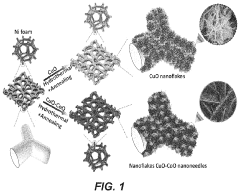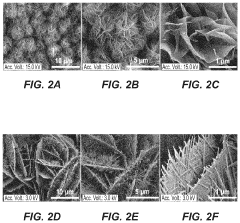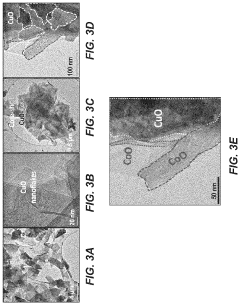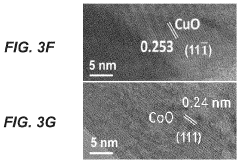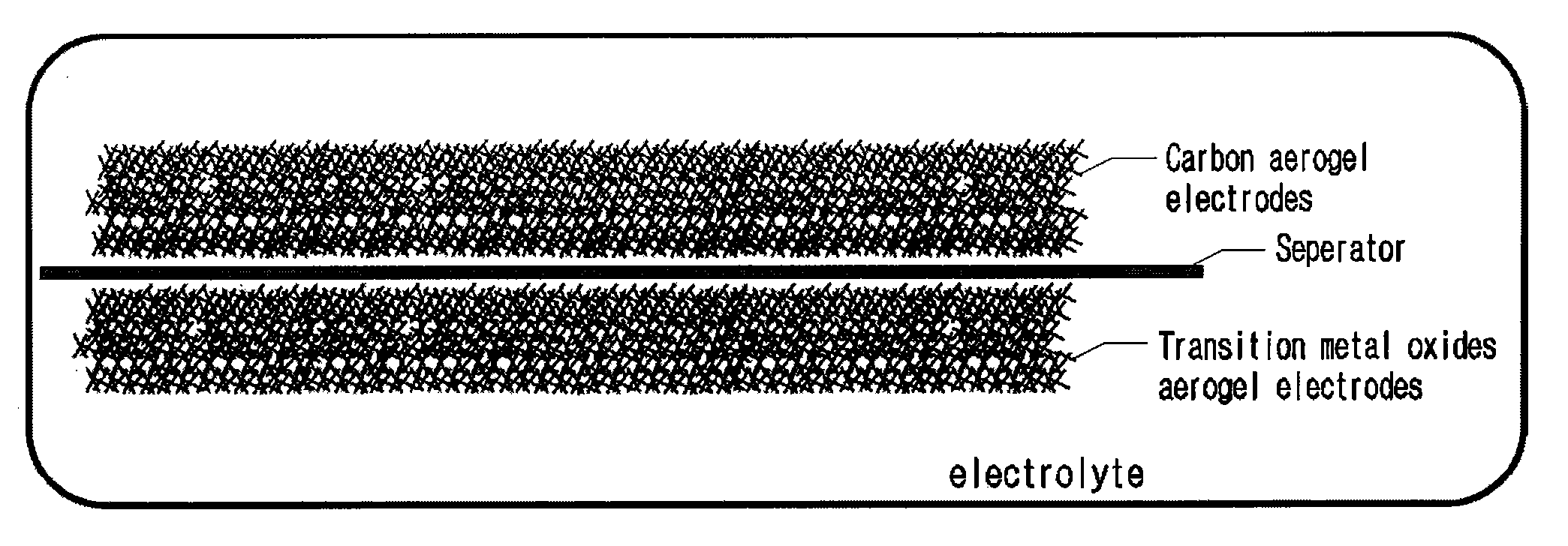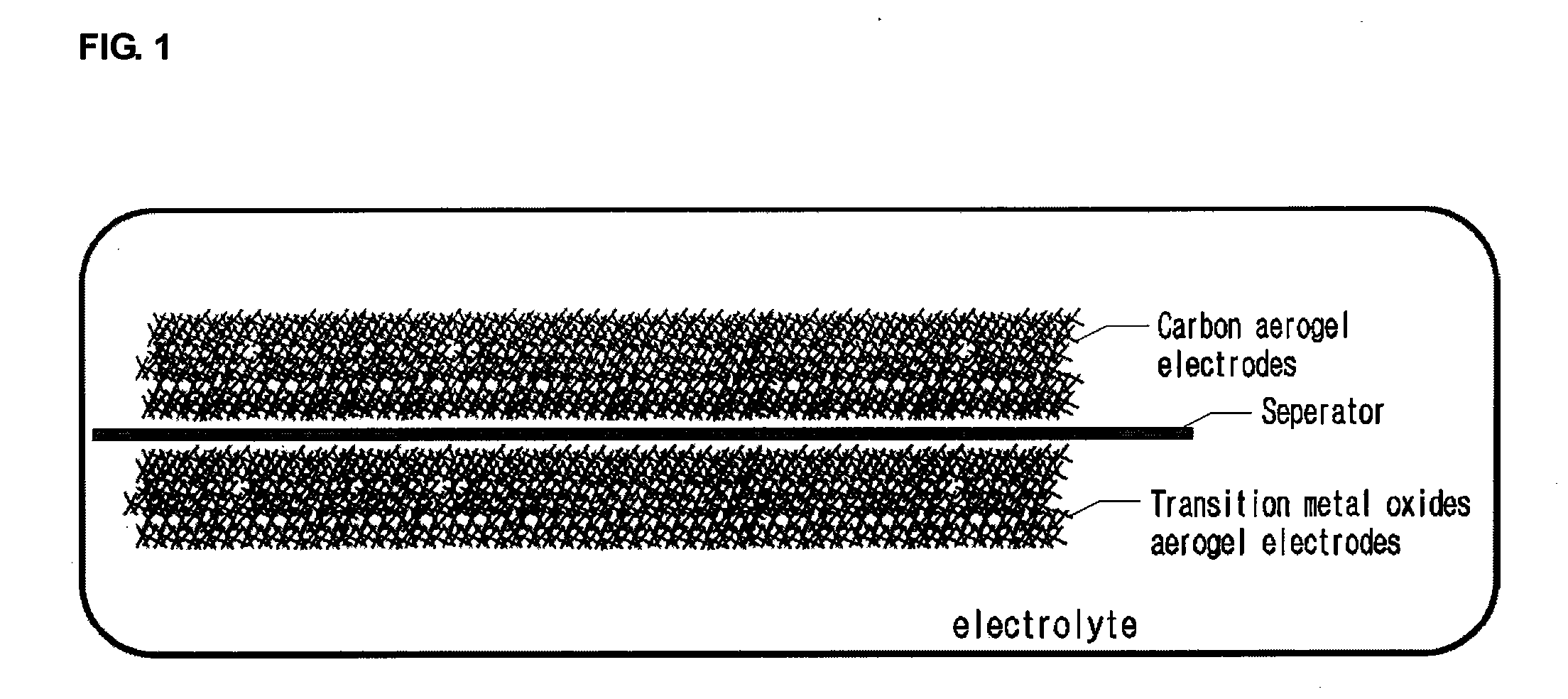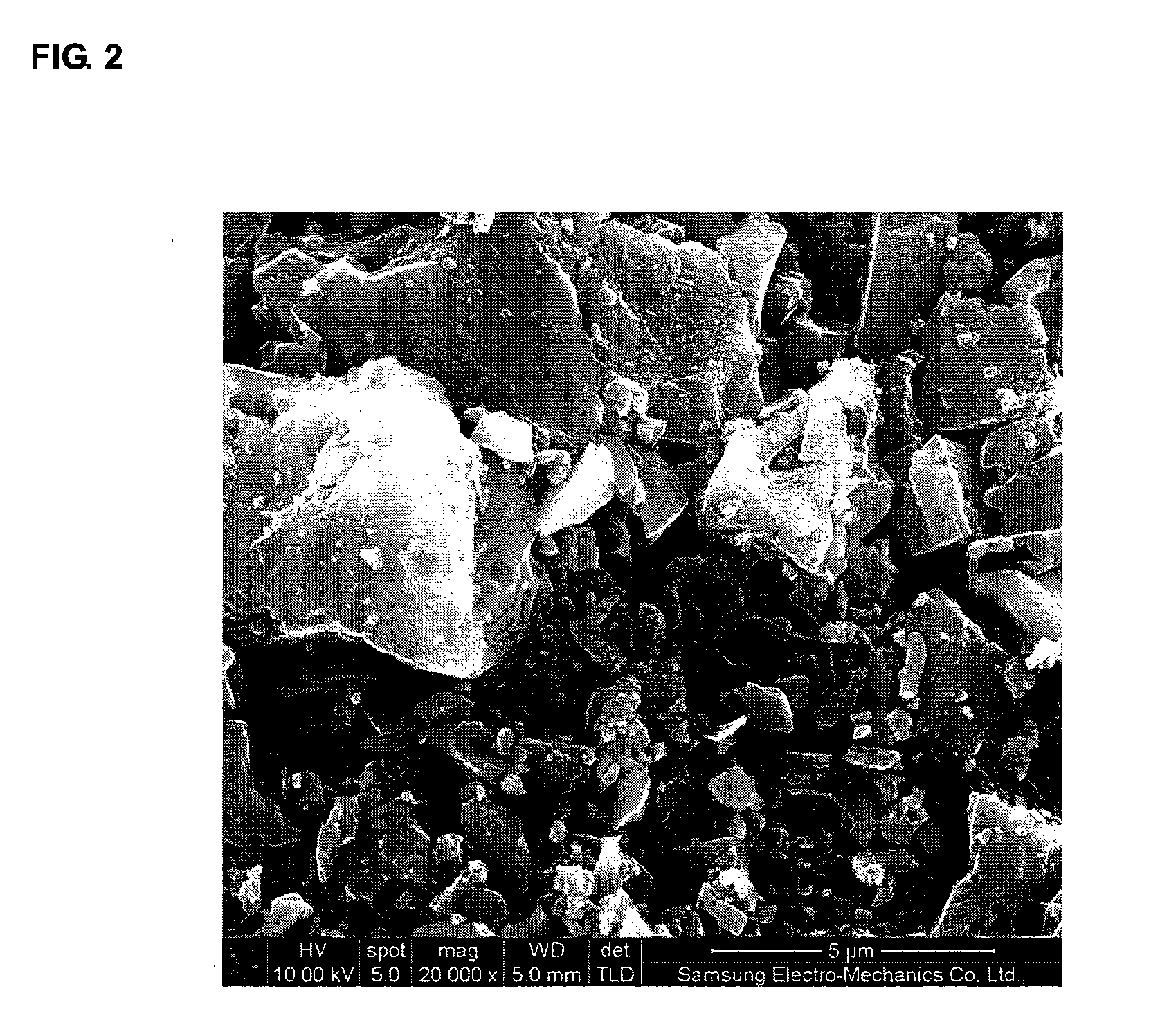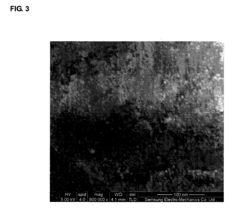Understanding the Hybrid Supercapacitor Electrical Response
OCT 15, 20259 MIN READ
Generate Your Research Report Instantly with AI Agent
Patsnap Eureka helps you evaluate technical feasibility & market potential.
Hybrid Supercapacitor Technology Background and Objectives
Hybrid supercapacitors represent a significant advancement in energy storage technology, combining the high power density of traditional supercapacitors with the higher energy density characteristics of batteries. The evolution of this technology can be traced back to the early 2000s when researchers began exploring ways to overcome the limitations of conventional supercapacitors, particularly their relatively low energy density compared to batteries.
The development trajectory of hybrid supercapacitors has been marked by continuous innovation in electrode materials, electrolytes, and device architectures. Initially, carbon-based materials dominated the supercapacitor landscape, but the integration of battery-type materials such as metal oxides, conducting polymers, and lithium-intercalation compounds has enabled the creation of hybrid systems with substantially improved performance metrics.
Recent technological trends indicate a growing focus on nanomaterial engineering and composite electrode structures to optimize the interface between different charge storage mechanisms. This approach has yielded promising results in enhancing both energy and power capabilities while maintaining the cycle stability that makes supercapacitors attractive for numerous applications.
The primary objective in hybrid supercapacitor development is to achieve a deeper understanding of the complex electrical response that results from the combination of different charge storage mechanisms. This includes elucidating the kinetics of ion transport, charge transfer processes, and the interaction between faradaic and non-faradaic components within the hybrid system.
Another critical goal is to develop predictive models that can accurately describe the electrical behavior of hybrid supercapacitors under various operating conditions. Such models would facilitate the design of optimized devices tailored for specific applications, from consumer electronics to grid-scale energy storage.
Furthermore, researchers aim to establish standardized testing protocols and performance metrics specifically adapted for hybrid supercapacitors, as current standards primarily cater to either batteries or conventional supercapacitors, potentially misrepresenting the unique characteristics of hybrid systems.
The long-term technological objective extends to creating commercially viable hybrid supercapacitor products that can effectively bridge the gap between high-power and high-energy applications, potentially revolutionizing sectors such as electric vehicles, renewable energy integration, and portable electronics. This requires not only advances in fundamental science but also innovations in manufacturing processes to ensure cost-effectiveness and scalability.
The development trajectory of hybrid supercapacitors has been marked by continuous innovation in electrode materials, electrolytes, and device architectures. Initially, carbon-based materials dominated the supercapacitor landscape, but the integration of battery-type materials such as metal oxides, conducting polymers, and lithium-intercalation compounds has enabled the creation of hybrid systems with substantially improved performance metrics.
Recent technological trends indicate a growing focus on nanomaterial engineering and composite electrode structures to optimize the interface between different charge storage mechanisms. This approach has yielded promising results in enhancing both energy and power capabilities while maintaining the cycle stability that makes supercapacitors attractive for numerous applications.
The primary objective in hybrid supercapacitor development is to achieve a deeper understanding of the complex electrical response that results from the combination of different charge storage mechanisms. This includes elucidating the kinetics of ion transport, charge transfer processes, and the interaction between faradaic and non-faradaic components within the hybrid system.
Another critical goal is to develop predictive models that can accurately describe the electrical behavior of hybrid supercapacitors under various operating conditions. Such models would facilitate the design of optimized devices tailored for specific applications, from consumer electronics to grid-scale energy storage.
Furthermore, researchers aim to establish standardized testing protocols and performance metrics specifically adapted for hybrid supercapacitors, as current standards primarily cater to either batteries or conventional supercapacitors, potentially misrepresenting the unique characteristics of hybrid systems.
The long-term technological objective extends to creating commercially viable hybrid supercapacitor products that can effectively bridge the gap between high-power and high-energy applications, potentially revolutionizing sectors such as electric vehicles, renewable energy integration, and portable electronics. This requires not only advances in fundamental science but also innovations in manufacturing processes to ensure cost-effectiveness and scalability.
Market Demand Analysis for Hybrid Energy Storage Solutions
The global market for hybrid energy storage solutions, particularly hybrid supercapacitors, has witnessed substantial growth driven by increasing demand for efficient energy management systems across various sectors. Current market analysis indicates that the hybrid supercapacitor market is expanding at a compound annual growth rate of approximately 20% between 2020 and 2027, significantly outpacing traditional energy storage technologies.
The automotive industry represents the largest market segment for hybrid supercapacitors, with electric and hybrid vehicles requiring advanced energy storage solutions that can deliver both high power density for acceleration and sufficient energy density for range. The integration of hybrid supercapacitors in regenerative braking systems has become particularly valuable, as these components can capture and store energy more efficiently than conventional batteries alone.
Consumer electronics constitutes another rapidly growing market segment, where the demand for faster charging capabilities and longer device lifespans is driving adoption of hybrid supercapacitor technology. Manufacturers are increasingly incorporating these components into smartphones, laptops, and wearable devices to address consumer frustrations with battery limitations.
The renewable energy sector presents perhaps the most promising long-term growth opportunity. Grid stabilization applications require energy storage systems that can respond rapidly to fluctuations in supply and demand, making hybrid supercapacitors ideal for frequency regulation and peak shaving applications. As renewable energy penetration increases globally, the need for such responsive storage solutions will continue to expand.
Industrial applications represent another significant market segment, with hybrid supercapacitors being deployed in uninterruptible power supplies, heavy machinery, and manufacturing equipment. The ability to withstand hundreds of thousands of charge-discharge cycles makes these components particularly valuable in settings requiring high reliability and minimal maintenance.
Market research indicates that Asia-Pacific currently dominates the hybrid supercapacitor market, accounting for approximately 45% of global demand. This regional concentration is primarily due to the strong presence of electronics manufacturing and automotive production facilities. North America and Europe follow with growing adoption rates driven by renewable energy integration and electric vehicle expansion.
Customer requirements across these markets consistently emphasize several key performance metrics: power density, energy density, cycle life, temperature performance, and cost. The electrical response characteristics of hybrid supercapacitors—particularly their ability to deliver rapid charge and discharge cycles while maintaining reasonable energy storage capacity—directly address these market needs and explain their growing adoption across diverse applications.
The automotive industry represents the largest market segment for hybrid supercapacitors, with electric and hybrid vehicles requiring advanced energy storage solutions that can deliver both high power density for acceleration and sufficient energy density for range. The integration of hybrid supercapacitors in regenerative braking systems has become particularly valuable, as these components can capture and store energy more efficiently than conventional batteries alone.
Consumer electronics constitutes another rapidly growing market segment, where the demand for faster charging capabilities and longer device lifespans is driving adoption of hybrid supercapacitor technology. Manufacturers are increasingly incorporating these components into smartphones, laptops, and wearable devices to address consumer frustrations with battery limitations.
The renewable energy sector presents perhaps the most promising long-term growth opportunity. Grid stabilization applications require energy storage systems that can respond rapidly to fluctuations in supply and demand, making hybrid supercapacitors ideal for frequency regulation and peak shaving applications. As renewable energy penetration increases globally, the need for such responsive storage solutions will continue to expand.
Industrial applications represent another significant market segment, with hybrid supercapacitors being deployed in uninterruptible power supplies, heavy machinery, and manufacturing equipment. The ability to withstand hundreds of thousands of charge-discharge cycles makes these components particularly valuable in settings requiring high reliability and minimal maintenance.
Market research indicates that Asia-Pacific currently dominates the hybrid supercapacitor market, accounting for approximately 45% of global demand. This regional concentration is primarily due to the strong presence of electronics manufacturing and automotive production facilities. North America and Europe follow with growing adoption rates driven by renewable energy integration and electric vehicle expansion.
Customer requirements across these markets consistently emphasize several key performance metrics: power density, energy density, cycle life, temperature performance, and cost. The electrical response characteristics of hybrid supercapacitors—particularly their ability to deliver rapid charge and discharge cycles while maintaining reasonable energy storage capacity—directly address these market needs and explain their growing adoption across diverse applications.
Current State and Technical Challenges in Supercapacitor Development
Supercapacitors have emerged as promising energy storage devices, bridging the gap between conventional capacitors and batteries. Currently, the global supercapacitor market is experiencing robust growth, with a compound annual growth rate exceeding 20% and projected to reach $5.4 billion by 2025. This growth is driven by increasing demand for rapid energy storage solutions in automotive, renewable energy, and consumer electronics sectors.
The state-of-the-art in supercapacitor technology encompasses several categories: electric double-layer capacitors (EDLCs), pseudocapacitors, and hybrid supercapacitors. EDLCs store energy through electrostatic charge accumulation at electrode-electrolyte interfaces, while pseudocapacitors utilize fast, reversible redox reactions. Hybrid supercapacitors combine both mechanisms to optimize performance metrics.
Despite significant advancements, several technical challenges persist in hybrid supercapacitor development. The primary challenge involves understanding and controlling the complex electrical response resulting from the integration of different charge storage mechanisms. This complexity manifests in non-linear charge-discharge behaviors and frequency-dependent impedance characteristics that deviate from classical models.
Material limitations represent another significant hurdle. Current electrode materials struggle to simultaneously deliver high energy density, power density, and cycling stability. Carbon-based materials offer excellent conductivity but limited energy density, while metal oxides and conducting polymers provide higher capacitance but suffer from poor conductivity and stability issues.
Electrolyte development presents additional challenges. Aqueous electrolytes offer high ionic conductivity but limited voltage windows (≤1.23V), while organic electrolytes enable wider voltage ranges (2.5-2.7V) but with lower conductivity and safety concerns. Ionic liquid electrolytes show promise with voltage windows up to 4V but face limitations in conductivity and cost.
Interface engineering remains particularly challenging for hybrid systems. The electrode-electrolyte interface governs charge transfer kinetics and overall device performance, yet controlling interfacial properties at the nanoscale presents significant difficulties. Researchers struggle to characterize and optimize these interfaces due to their dynamic nature during operation.
Scale-up and manufacturing challenges further complicate commercial adoption. Laboratory-scale performance often deteriorates during industrial production due to difficulties in maintaining material quality, electrode thickness uniformity, and electrolyte distribution at larger scales. Additionally, the lack of standardized testing protocols hampers meaningful comparison between different research efforts.
Addressing these challenges requires interdisciplinary approaches combining materials science, electrochemistry, and engineering. Recent research directions include developing hierarchical porous structures, heteroatom-doped carbon materials, and novel hybrid architectures to overcome the energy-power trade-off that has traditionally limited supercapacitor applications.
The state-of-the-art in supercapacitor technology encompasses several categories: electric double-layer capacitors (EDLCs), pseudocapacitors, and hybrid supercapacitors. EDLCs store energy through electrostatic charge accumulation at electrode-electrolyte interfaces, while pseudocapacitors utilize fast, reversible redox reactions. Hybrid supercapacitors combine both mechanisms to optimize performance metrics.
Despite significant advancements, several technical challenges persist in hybrid supercapacitor development. The primary challenge involves understanding and controlling the complex electrical response resulting from the integration of different charge storage mechanisms. This complexity manifests in non-linear charge-discharge behaviors and frequency-dependent impedance characteristics that deviate from classical models.
Material limitations represent another significant hurdle. Current electrode materials struggle to simultaneously deliver high energy density, power density, and cycling stability. Carbon-based materials offer excellent conductivity but limited energy density, while metal oxides and conducting polymers provide higher capacitance but suffer from poor conductivity and stability issues.
Electrolyte development presents additional challenges. Aqueous electrolytes offer high ionic conductivity but limited voltage windows (≤1.23V), while organic electrolytes enable wider voltage ranges (2.5-2.7V) but with lower conductivity and safety concerns. Ionic liquid electrolytes show promise with voltage windows up to 4V but face limitations in conductivity and cost.
Interface engineering remains particularly challenging for hybrid systems. The electrode-electrolyte interface governs charge transfer kinetics and overall device performance, yet controlling interfacial properties at the nanoscale presents significant difficulties. Researchers struggle to characterize and optimize these interfaces due to their dynamic nature during operation.
Scale-up and manufacturing challenges further complicate commercial adoption. Laboratory-scale performance often deteriorates during industrial production due to difficulties in maintaining material quality, electrode thickness uniformity, and electrolyte distribution at larger scales. Additionally, the lack of standardized testing protocols hampers meaningful comparison between different research efforts.
Addressing these challenges requires interdisciplinary approaches combining materials science, electrochemistry, and engineering. Recent research directions include developing hierarchical porous structures, heteroatom-doped carbon materials, and novel hybrid architectures to overcome the energy-power trade-off that has traditionally limited supercapacitor applications.
Current Technical Solutions for Electrical Response Optimization
01 Electrical response characteristics of hybrid supercapacitors
Hybrid supercapacitors exhibit unique electrical response characteristics that combine features of both batteries and traditional supercapacitors. These devices demonstrate specific voltage-current relationships, charge-discharge profiles, and frequency responses that distinguish them from other energy storage technologies. The electrical response typically shows pseudocapacitive behavior combined with double-layer capacitance, resulting in higher energy density while maintaining good power density. These characteristics make hybrid supercapacitors suitable for applications requiring both high energy and power capabilities.- Electrical response characteristics of hybrid supercapacitors: Hybrid supercapacitors exhibit unique electrical response characteristics that combine features of both traditional capacitors and batteries. These devices demonstrate rapid charge-discharge cycles with high power density while maintaining good energy density. The electrical response typically shows non-linear behavior during charging and discharging, with distinctive voltage profiles that reflect the hybrid nature of the energy storage mechanism involving both electrostatic and electrochemical processes.
- Hybrid supercapacitor applications in vehicle systems: Hybrid supercapacitors are increasingly being integrated into vehicle electrical systems to improve energy efficiency and performance. These applications include regenerative braking systems, start-stop systems, and power assistance for electric and hybrid vehicles. The rapid response characteristics of hybrid supercapacitors make them particularly suitable for capturing energy during braking events and providing burst power during acceleration, complementing traditional battery systems.
- Control systems for managing hybrid supercapacitor response: Specialized control systems are essential for optimizing the electrical response of hybrid supercapacitors in various applications. These control systems monitor parameters such as voltage, current, temperature, and state of charge to manage charging and discharging processes efficiently. Advanced algorithms are employed to balance power distribution between supercapacitors and other energy storage components, ensuring optimal performance and extending the operational lifetime of the hybrid energy storage system.
- Materials and construction affecting electrical response: The electrical response of hybrid supercapacitors is significantly influenced by the materials used in their construction and their structural design. Key factors include electrode materials (such as activated carbon, metal oxides, and conductive polymers), electrolyte composition, separator properties, and current collector design. Novel nanomaterials and composite structures are being developed to enhance specific capacitance, reduce internal resistance, and improve the overall electrical response characteristics of hybrid supercapacitors.
- Circuit integration and electrical response optimization: Integrating hybrid supercapacitors into electrical circuits requires specialized approaches to optimize their electrical response. This includes designing appropriate power conditioning circuits, implementing impedance matching techniques, and developing custom interface electronics. Circuit configurations such as series-parallel arrangements and hybrid combinations with batteries are employed to achieve desired voltage levels, power delivery capabilities, and response times. These integration strategies are critical for maximizing the benefits of hybrid supercapacitors in practical applications.
02 Hybrid supercapacitor integration in vehicle electrical systems
Hybrid supercapacitors can be integrated into vehicle electrical systems to improve energy efficiency and performance. These systems utilize the rapid charge-discharge capabilities of supercapacitors alongside conventional batteries to handle peak power demands, regenerative braking energy capture, and start-stop functionality. The electrical response of these integrated systems shows improved transient response, reduced battery stress, and enhanced overall system efficiency. Vehicle applications benefit from the supercapacitors' ability to quickly absorb and deliver power while maintaining stable voltage levels under varying load conditions.Expand Specific Solutions03 Control systems for managing hybrid supercapacitor electrical response
Specialized control systems are essential for managing the electrical response of hybrid supercapacitors in practical applications. These control systems monitor parameters such as voltage, current, temperature, and state of charge to optimize performance and prevent damage. Advanced algorithms regulate charge-discharge cycles, balance energy distribution between battery and supercapacitor components, and adapt to changing load conditions. The control architecture typically includes power electronics interfaces that condition the electrical response to meet application requirements while maximizing efficiency and extending operational lifetime.Expand Specific Solutions04 Novel electrode materials affecting electrical response
The electrical response of hybrid supercapacitors is significantly influenced by the choice of electrode materials. Novel materials combining high surface area carbon structures with pseudocapacitive materials like metal oxides, conducting polymers, or lithium-intercalation compounds create unique electrical signatures. These composite electrodes exhibit combined double-layer capacitance and faradaic reactions, resulting in distinctive charge-discharge profiles, impedance characteristics, and cycling behavior. The electrical response typically shows higher energy density than conventional supercapacitors while maintaining better power capability and cycle life than batteries.Expand Specific Solutions05 Measurement and characterization techniques for hybrid supercapacitor electrical response
Specialized measurement and characterization techniques are employed to analyze the electrical response of hybrid supercapacitors. These include electrochemical impedance spectroscopy, cyclic voltammetry, galvanostatic charge-discharge testing, and frequency response analysis. Advanced instrumentation captures the complex behavior arising from the combination of double-layer capacitance and faradaic processes. Data analysis methods extract key performance parameters such as specific capacitance, equivalent series resistance, power density, energy density, and cycle stability. These characterization techniques are essential for understanding device behavior, optimizing designs, and predicting performance in various applications.Expand Specific Solutions
Key Industry Players in Hybrid Supercapacitor Market
The hybrid supercapacitor market is currently in a growth phase, with increasing adoption across automotive, electronics, and energy storage sectors. The global market size is projected to reach approximately $1.5 billion by 2025, with a CAGR of 20-25%. Technology maturity varies significantly among key players, with established companies like Robert Bosch, Samsung Electro-Mechanics, and Toyota Motor Corp leading commercial applications through advanced R&D capabilities. Academic institutions including Tsinghua University, California Institute of Technology, and Indian Institute of Science are driving fundamental research innovations. Chinese manufacturers like Shanghai Aowei Technology and SAMWHA CAPACITOR are rapidly advancing manufacturing capabilities, while specialized firms such as Nanotek Instruments and Nanotecture are developing proprietary nanostructured materials to enhance electrical response characteristics and energy density of hybrid supercapacitors.
Shanghai Aowei Technology Development Co., Ltd.
Technical Solution: Shanghai Aowei Technology has developed proprietary hybrid supercapacitor technology specifically optimized for high-power applications in transportation and grid storage. Their approach combines lithium titanate (LTO) negative electrodes with activated carbon positive electrodes to create asymmetric systems that bridge the gap between conventional supercapacitors and lithium-ion batteries. Aowei's hybrid supercapacitors demonstrate a unique electrical response characterized by high power density (>6 kW/kg) while achieving energy densities of 25-30 Wh/kg - approximately 3-5 times higher than conventional supercapacitors. The company has developed sophisticated manufacturing processes for their proprietary electrode materials and cell designs, enabling mass production with consistent performance characteristics. Their systems feature advanced electrolyte formulations that extend the operating voltage window to 3.0V while maintaining excellent cycle life (>50,000 cycles with <20% capacity degradation). Particularly notable is Aowei's development of comprehensive electrical models that accurately predict the complex impedance behavior of their hybrid systems under various operating conditions, enabling precise system integration and control strategies for applications ranging from electric buses to grid frequency regulation.
Strengths: Established commercial production capabilities; proven field performance in transportation applications; excellent cycle life and reliability; comprehensive system integration expertise including thermal management and battery management systems. Weaknesses: Lower energy density compared to lithium-ion batteries; more complex manufacturing process than conventional supercapacitors; temperature-dependent performance characteristics requiring careful system design.
Institute of Electrical Engineering, Chinese Academy of Sciences
Technical Solution: The Institute of Electrical Engineering at the Chinese Academy of Sciences has conducted extensive research on hybrid supercapacitor electrical response characteristics, developing novel electrode materials and system architectures. Their approach focuses on understanding the fundamental mechanisms governing the complex impedance behavior of hybrid systems that combine double-layer capacitance with pseudocapacitive or battery-like processes. The Institute has pioneered advanced in-situ characterization techniques including electrochemical impedance spectroscopy under dynamic loading conditions, allowing researchers to decouple various charge storage mechanisms and their respective time constants. Their work has resulted in comprehensive mathematical models that accurately describe the non-linear electrical response of hybrid supercapacitors across frequency ranges from mHz to kHz. Particularly noteworthy is their development of manganese oxide/graphene composite electrodes with hierarchical pore structures that demonstrate superior rate capability while maintaining high specific capacitance (>350 F/g). The Institute has also made significant contributions to understanding how electrolyte composition affects ion transport kinetics and the resulting frequency-dependent impedance characteristics in hybrid systems.
Strengths: Cutting-edge fundamental research capabilities; sophisticated characterization techniques; strong theoretical modeling expertise; access to advanced materials synthesis facilities. Weaknesses: Less focus on commercial-scale manufacturing considerations; some research directions may prioritize scientific novelty over practical implementation; potential gaps between laboratory performance and real-world application requirements.
Critical Patents and Research on Hybrid Supercapacitor Mechanisms
High-rate hybrid supercapacitor
PatentActiveUS11152160B1
Innovation
- A high-rate hybrid supercapacitor is developed using copper oxide (CuO)-cobalt oxide (CoO) core-shell nanocactus-like heterostructures on a nickel foam substrate, combined with a graphene ink-coated nickel foam negative electrode and cellulose paper separator, enhancing electrochemical activity and ion transport pathways.
Hybrid supercapacitor using transition metal oxide aerogel
PatentInactiveUS20100195268A1
Innovation
- A hybrid supercapacitor design utilizing a monolithic carbon aerogel cathode and transition metal oxide aerogel anode, eliminating the need for a current collector and binder, thereby optimizing the contact area and reducing internal resistance, and employing a sol-gel process to control pore size and enhance capacitance.
Materials Science Advancements for Hybrid Supercapacitors
Recent advancements in materials science have significantly propelled the development of hybrid supercapacitors, addressing key limitations in traditional energy storage technologies. The integration of novel electrode materials has been particularly transformative, with carbon-based materials like graphene and carbon nanotubes offering exceptional surface area and conductivity properties. These materials enable faster electron transfer and enhanced ion adsorption, directly improving the electrical response characteristics of hybrid supercapacitors.
Metal oxides and conducting polymers have emerged as complementary materials that contribute pseudocapacitive properties, allowing for increased energy density without significant compromise to power density. The strategic combination of these materials creates synergistic effects that optimize the balance between faradaic and non-faradaic charge storage mechanisms, resulting in more efficient electrical response across varying discharge rates.
Nanostructuring techniques have revolutionized electrode design, creating hierarchical porous structures that facilitate ion transport pathways while maintaining structural integrity during charge-discharge cycles. These engineered architectures minimize diffusion distances and internal resistance, directly enhancing the rate capability and frequency response of hybrid supercapacitors. The precise control over pore size distribution has proven critical in tailoring devices for specific application requirements.
Electrolyte innovations have complemented these electrode advancements, with ionic liquids and gel polymer electrolytes extending operational voltage windows and temperature ranges. These next-generation electrolytes demonstrate improved ionic conductivity and electrochemical stability, contributing to enhanced capacitance retention and cycle life. The interface between electrode materials and electrolytes has become a focal point for research, as interfacial engineering techniques reduce contact resistance and improve charge transfer kinetics.
Composite materials represent perhaps the most promising direction in materials science for hybrid supercapacitors. By combining different material classes at the nanoscale, researchers have created electrodes with complementary properties that address multiple performance metrics simultaneously. For example, graphene-metal oxide composites leverage the conductivity of graphene with the high specific capacitance of metal oxides, resulting in superior electrical response characteristics across broad frequency ranges.
The development of sustainable and abundant materials for hybrid supercapacitors has gained momentum, with biomass-derived carbons and earth-abundant metal compounds showing promising performance metrics. These environmentally conscious materials not only reduce dependence on critical raw materials but often exhibit unique structural features that benefit electrical response parameters, particularly in terms of power delivery and energy retention.
Metal oxides and conducting polymers have emerged as complementary materials that contribute pseudocapacitive properties, allowing for increased energy density without significant compromise to power density. The strategic combination of these materials creates synergistic effects that optimize the balance between faradaic and non-faradaic charge storage mechanisms, resulting in more efficient electrical response across varying discharge rates.
Nanostructuring techniques have revolutionized electrode design, creating hierarchical porous structures that facilitate ion transport pathways while maintaining structural integrity during charge-discharge cycles. These engineered architectures minimize diffusion distances and internal resistance, directly enhancing the rate capability and frequency response of hybrid supercapacitors. The precise control over pore size distribution has proven critical in tailoring devices for specific application requirements.
Electrolyte innovations have complemented these electrode advancements, with ionic liquids and gel polymer electrolytes extending operational voltage windows and temperature ranges. These next-generation electrolytes demonstrate improved ionic conductivity and electrochemical stability, contributing to enhanced capacitance retention and cycle life. The interface between electrode materials and electrolytes has become a focal point for research, as interfacial engineering techniques reduce contact resistance and improve charge transfer kinetics.
Composite materials represent perhaps the most promising direction in materials science for hybrid supercapacitors. By combining different material classes at the nanoscale, researchers have created electrodes with complementary properties that address multiple performance metrics simultaneously. For example, graphene-metal oxide composites leverage the conductivity of graphene with the high specific capacitance of metal oxides, resulting in superior electrical response characteristics across broad frequency ranges.
The development of sustainable and abundant materials for hybrid supercapacitors has gained momentum, with biomass-derived carbons and earth-abundant metal compounds showing promising performance metrics. These environmentally conscious materials not only reduce dependence on critical raw materials but often exhibit unique structural features that benefit electrical response parameters, particularly in terms of power delivery and energy retention.
Environmental Impact and Sustainability Considerations
The environmental impact of hybrid supercapacitors represents a critical consideration in their development and deployment. These energy storage devices offer significant sustainability advantages compared to conventional batteries, primarily due to their longer cycle life and reduced reliance on rare or toxic materials. Hybrid supercapacitors typically achieve between 100,000 to 1,000,000 charge-discharge cycles, substantially exceeding the 500-2,000 cycles of traditional lithium-ion batteries, thereby reducing electronic waste generation and resource consumption over time.
Material composition plays a fundamental role in the environmental profile of hybrid supercapacitors. Many designs incorporate carbon-based materials like activated carbon, graphene, and carbon nanotubes, which can be derived from renewable or waste biomass sources. This approach creates opportunities for circular economy applications and reduces dependence on mining-intensive materials. Additionally, hybrid supercapacitors often require smaller quantities of critical minerals compared to conventional batteries, potentially alleviating supply chain pressures on resources like cobalt, nickel, and lithium.
Manufacturing processes for hybrid supercapacitors generally consume less energy than battery production, with estimates suggesting 10-30% lower carbon footprints during fabrication. However, challenges remain in scaling production methods for advanced electrode materials while maintaining environmental benefits. The electrical response characteristics of hybrid supercapacitors—particularly their high power density and rapid charging capabilities—also contribute to their sustainability profile by enabling more efficient energy recovery in applications like regenerative braking systems.
End-of-life considerations represent another dimension where hybrid supercapacitors demonstrate environmental advantages. Their simpler construction and reduced use of toxic materials facilitate recycling processes. Research indicates recovery rates exceeding 80% for key components in some hybrid supercapacitor designs, compared to 50-70% for conventional batteries. Furthermore, the materials recovered often maintain higher purity levels, enhancing their value in secondary applications.
Looking forward, the environmental impact of hybrid supercapacitors will be increasingly shaped by their integration into renewable energy systems. Their ability to handle rapid charge-discharge cycles makes them particularly suitable for smoothing intermittent renewable generation, potentially reducing reliance on fossil fuel backup systems. Life cycle assessments indicate that hybrid supercapacitors deployed in such applications could achieve carbon payback periods of 1-3 years, depending on the specific energy mix and usage patterns.
Material composition plays a fundamental role in the environmental profile of hybrid supercapacitors. Many designs incorporate carbon-based materials like activated carbon, graphene, and carbon nanotubes, which can be derived from renewable or waste biomass sources. This approach creates opportunities for circular economy applications and reduces dependence on mining-intensive materials. Additionally, hybrid supercapacitors often require smaller quantities of critical minerals compared to conventional batteries, potentially alleviating supply chain pressures on resources like cobalt, nickel, and lithium.
Manufacturing processes for hybrid supercapacitors generally consume less energy than battery production, with estimates suggesting 10-30% lower carbon footprints during fabrication. However, challenges remain in scaling production methods for advanced electrode materials while maintaining environmental benefits. The electrical response characteristics of hybrid supercapacitors—particularly their high power density and rapid charging capabilities—also contribute to their sustainability profile by enabling more efficient energy recovery in applications like regenerative braking systems.
End-of-life considerations represent another dimension where hybrid supercapacitors demonstrate environmental advantages. Their simpler construction and reduced use of toxic materials facilitate recycling processes. Research indicates recovery rates exceeding 80% for key components in some hybrid supercapacitor designs, compared to 50-70% for conventional batteries. Furthermore, the materials recovered often maintain higher purity levels, enhancing their value in secondary applications.
Looking forward, the environmental impact of hybrid supercapacitors will be increasingly shaped by their integration into renewable energy systems. Their ability to handle rapid charge-discharge cycles makes them particularly suitable for smoothing intermittent renewable generation, potentially reducing reliance on fossil fuel backup systems. Life cycle assessments indicate that hybrid supercapacitors deployed in such applications could achieve carbon payback periods of 1-3 years, depending on the specific energy mix and usage patterns.
Unlock deeper insights with Patsnap Eureka Quick Research — get a full tech report to explore trends and direct your research. Try now!
Generate Your Research Report Instantly with AI Agent
Supercharge your innovation with Patsnap Eureka AI Agent Platform!
